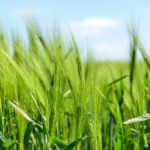Born in 1935 in Russia.
Academician of the Russian Academy of Sciences, Academician of the Russian Academy of Agricultural Sciences, Academician of the Russian Academy of Natural Sciences, Member of London Royal Linnean Society, Academician of the Agricultural Academy of the Czech Republic, Academician of the Agricultural Academy of Slovakia, Academician of the Academy of Natural Sciences of Mongolia, Professor of Genetics.
Field of scientific activity: genetics of populations, ecological, physiological genetics of plants, genetics of quantitative characters, theory of breeding, high breeding technologies.
Author of the Theory of ecological and genetic organization of quantitative traits, which is included in Explanatory dictionary on genetics, breeding, DNA-technologies and bioinformatic. On the basis of this theory, more than 30 domestic and foreign genetic and breeding works have been created. Principle of background characters by V. Dragovtsev is included in the International encyclopaedia “Basic Life Science” (New York, London, Boston).
He has developed a special breeding phytotron, where breeding technologies have very significant advantages and high efficiency.
Scientific results of V. Dragovtsev are included in 20 textbooks and education accessories for universities (including textbooks of Germany, Greece, Mexico, Bulgaria, Ukraine and Belarus).
Social-scientific and pedagogical activity:
Lectures: Kazakh Agrarian University (Kazakhstan), Novosibirsk University (Russia), University of Manitoba (Winnipeg, Canada), University of Alberta (Edmonton, Canada).
Chairman of the Russian public organization “Conservation of N.I. Vavilov’s heritage”.
Scientific school: educated 12 professors and 35 doctors of science in the field of ecogenetics of quantitative traits and theory of breeding. Scientific School of V. Dragovtsev was registered in the Russian Foundation for Basic Research (https://www.rfbr.ru/rffi/eng).
Main publications: 560 scientific papers, including 20 personal and collective monographs.
Scientifically and practically proved that the Theory of ecological and genetic organization of quantitative traits created by him, due to new breeding phytotronic technologies and food technologies of the 3rd generation, is able to provide high-quality food to more than 10 billion people who will appear on Earth by 2050.



